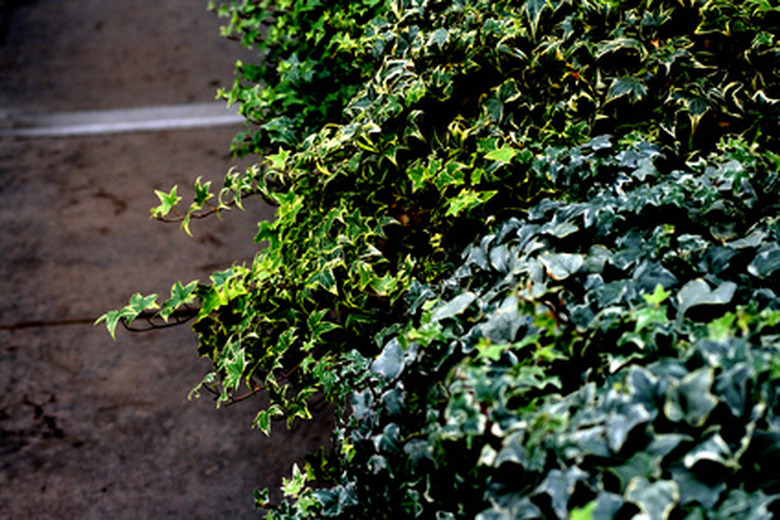How To Plant English Ivy As A Ground Cover
Things Needed
- Soil
- Rototiller
- Shovel
- Mulch
- Fertilizer
- Compost
English ivy (Hedera helix) is a fast-growing evergreen climbing vine that can be used as a ground cover and grows well in zones 3 through 9. Ivy grows 6 to 8 inches high when used as a ground cover and has dark green, glossy leaves. A cold-hardy and virtually pest-free plant, English ivy is a good choice for gardeners wanting a low-maintenance plant.
Step 1
Plant your English ivy in the spring once the ground is workable, preferably after the last frost. Choose an overcast day or plant in the late afternoon on a sunny day to protect your ivy from the direct sun which can scorch its leaves and cause shock to the newly transplanted plant.
Step 2
Select a planting site that receives either full sun or shade as ivy can be grown in either. Too much shade can slow the growth of the plant. Planting on the east or north side of a building or a tree works well.
- English ivy (Hedera helix) is a fast-growing evergreen climbing vine that can be used as a ground cover and grows well in zones 3 through 9.
- Choose an overcast day or plant in the late afternoon on a sunny day to protect your ivy from the direct sun which can scorch its leaves and cause shock to the newly transplanted plant.
Step 3
Clear the planting site of weeds and debris, then loosen the soil to a depth of 1 foot using a small rototiller or shovel. Ivy needs well-draining soil with a slightly alkaline pH between 7.0 to 7.3. Amend the soil with organic compost; work in well.
Step 4
Dig a hole for each plant that is about 3 to 4 inches deep and slightly wider than the root ball. Space plants about 6 to 12 inches apart, and within two years the ivy will grow together to form a thick ground covering.
Step 5
Remove the plants from their containers, gently pull apart the root ball to loosen, and remove the lower two sets of leaves on the stem to stimulate root growth.
Step 6
Place the plants in the holes, planting deeply up to the first set of leaves. Fill the hole with soil and tamp down gently around the base of the plant.
- Clear the planting site of weeds and debris, then loosen the soil to a depth of 1 foot using a small rototiller or shovel.
Step 7
Water the ivy well after planting using a gardening hose or soaker hose. Keep the plants watered thoroughly three to four times weekly so the soil stays moist.
Step 8
Feed with a balanced controlled-release fertilizer (5-5-5) after planting. Fertilize twice a year, once in the spring and again during midsummer.
Step 9
Add a layer of mulch to help control weeds and maintain moisture in the soil. Use a 2-inch-thick layer of chopped leaves or shredded bark. Replace each spring.
- Water the ivy well after planting using a gardening hose or soaker hose.
- Feed with a balanced controlled-release fertilizer (5-5-5) after planting.
Tip
Ivy can be used as an alternative to a lawn in small yards.
Warning
Do not let the plants get overly wet in the wintertime.
